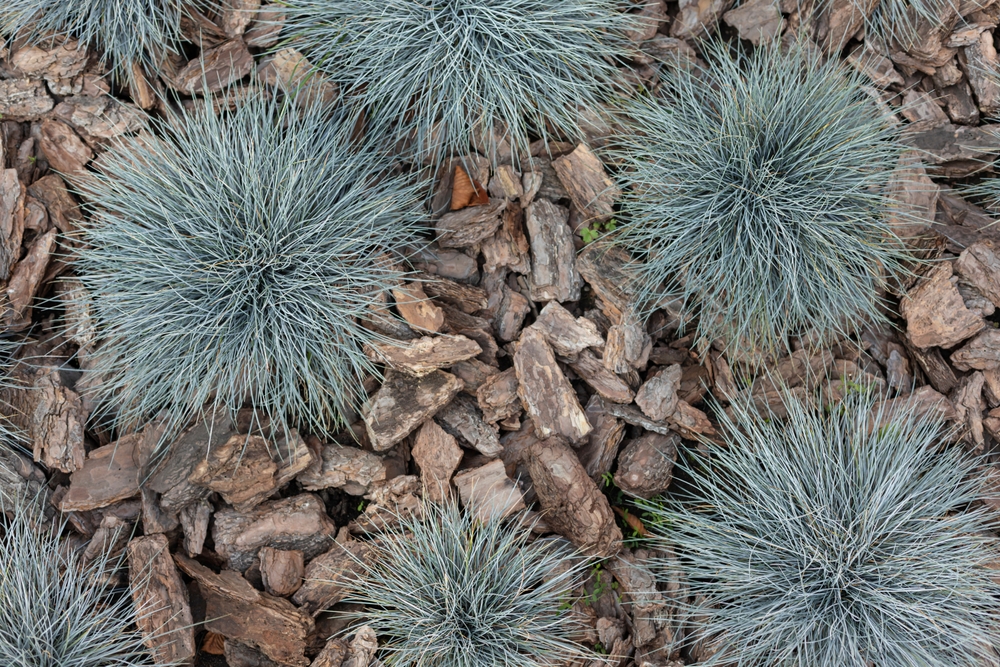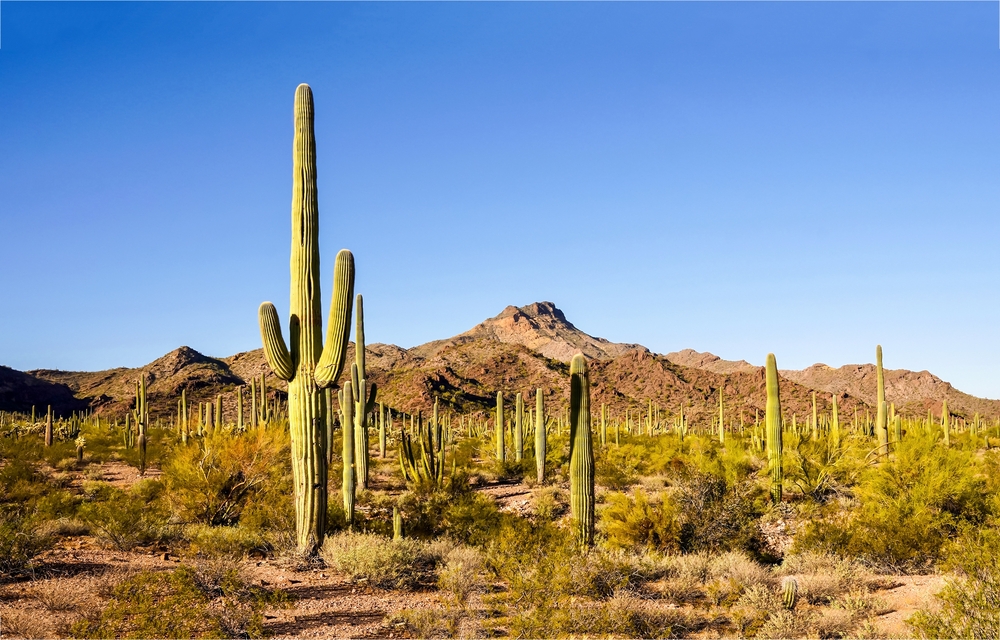Creating the perfect arid bioactive terrarium can be difficult. Understanding the different species of commonly-available desert plants is a great way to ensure success. The following plant species are ideal for beginners creating their first arid bioactive terrarium for their leopard gecko, bearded dragon, or other arid/desert reptile…
Arid Bioactive Plants
Aloe Vera
This well-known plant is native to the Arabian Peninsula but has been introduced to numerous regions around the world, it is considered an invasive species in many countries. Best known for its use in treatments and cosmetics it is also a very good arid bioactive terrarium plant. While many succulents are low growing this Aloe’s upright habit adds a different dimension to the terrarium. Planting several at the back of an arid bioactive enclosure makes excellent shelter and climbing opportunities for many species, especially small geckos.
Wax Agave/Lipstick Echeveria (Echeveria agavoides)
E. agavoides are available in numerous different cultivars, most of which have green leaves with a red tip. These are a great addition to any arid bioactive terrarium and add a splash of colour. Good lighting is essential to ensure bright colours.
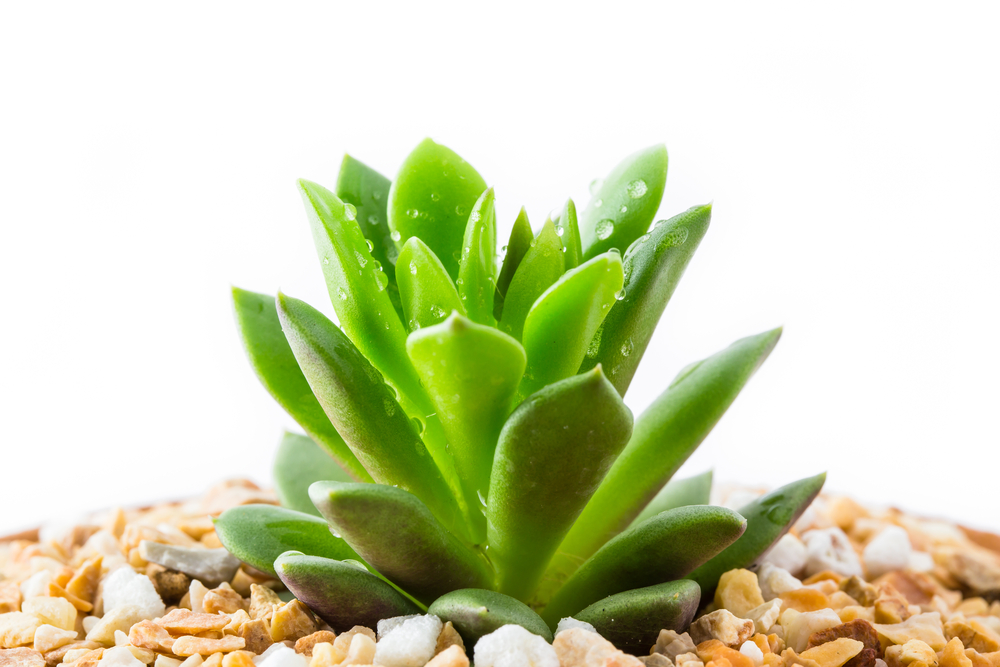
Echeveria ‘Purple Pearl’ and ‘Perle von Nurnburg’
With their bright purple colouration, these succulents will brighten up any arid bioactive terrarium. These cultivars are very similar in appearance with purple pearl being a deeper purple colour. The better the quality of light, the brighter the plants will be. LED grow lights will be essential to display these plants at their best. Soft leaves make them ideal for numerous species.
Donkey’s Tail (Sedum morganianum)
Native to Southern Mexico, this trailing succulent brings something a little different to the terrarium. It is at its best when planted high up and allowed to hang or trail down. This can be achieved by building up rocks and wood and placing the plants in between. Sedums are a delicate plant and bits can be knocked off by the terrarium occupants. This, however, can be a good thing as these can be left to take root, creating more plants and a naturalistic effect.
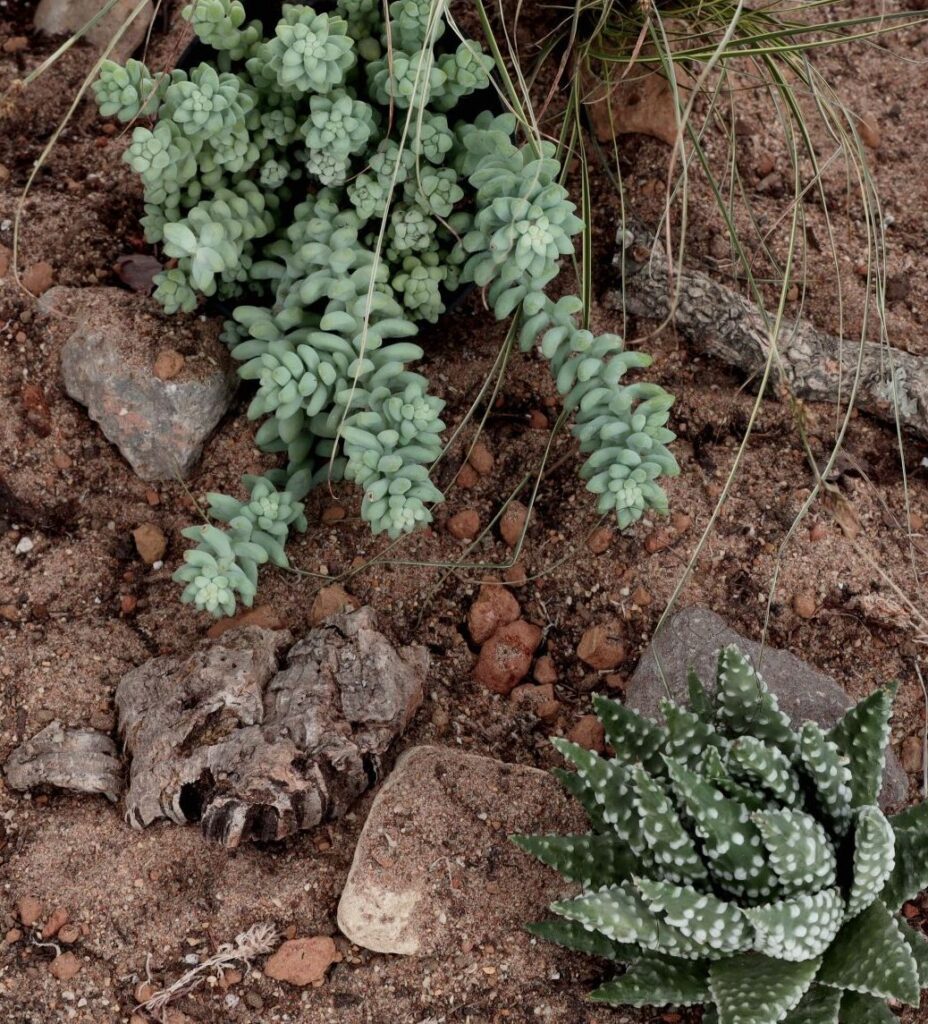
Jade/Money Plant (Crassula sp.)
With many species and varieties available these are ideal plants for the terrarium. Crassula ovata is the most commonly seen and resembles a small tree. This is a great species for adding height to the arid bioactive terrarium and will be appreciated by climbing species such as collared lizards, however, it is also useful for creating cover for small geckos and young tortoises. Large specimens of the species could also be used for Bearded dragons.
Crassula capitella ‘Campfire’ is a stunning red variety and adds colour to the arid bioactive terrarium. This species is smaller and more delicate but still suitable for several species such as leopard geckos and other small Geckos.
Bell Succulent (Stapelia leendertziae)
This succulent has the appearance of a typical cactus but without spines. It is a fast-growing, easy-to-care-for plant that thrives in the arid terrarium. This plant does grow quite tall so is best placed at the back of the enclosure. This plant does have delicate stems that could easily be snapped by large animals. Given the correct conditions this plant will produce stunning, albeit bad-smelling, flowers.
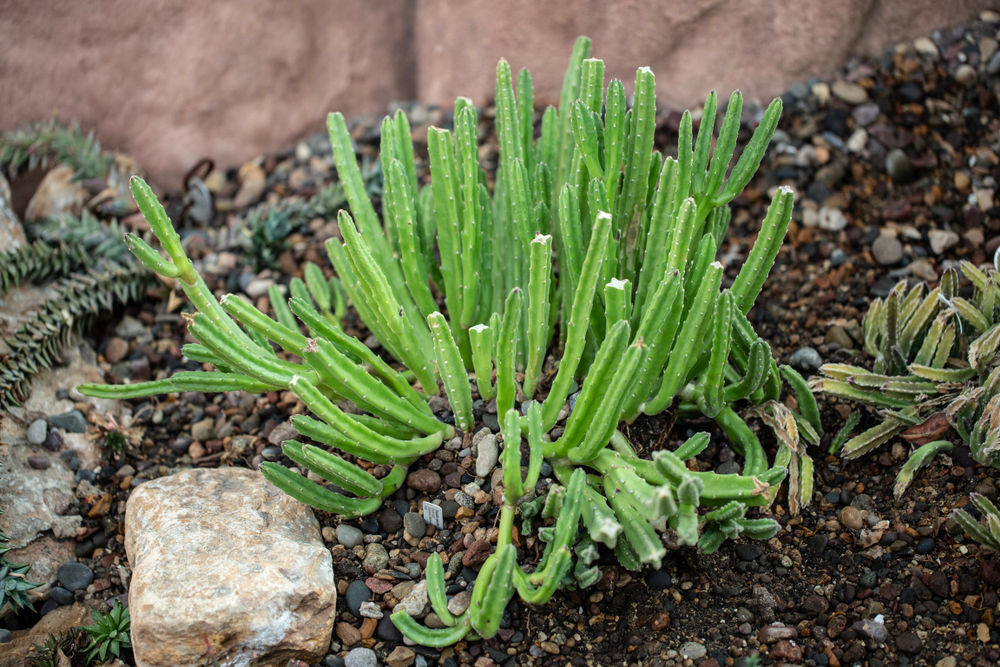
Candle Succulent (Senecio stapeliiformis)
Tall cylindrical stems add height to the arid terrarium. This plant is drought tolerant and can withstand high temperatures, so it is the ideal plant for arid bioactive terrariums. The stems are stronger than the bell succulent so this can be used with larger species, such as collared lizards.
Ox Tongue (Gasteria ‘Little Warty’)
Named for green dots that run the length of its leaves, giving the appearance of warts, this is a very hardy plant that can tolerate bright light and some shade. Can be slow growing but when water generously (once a week) during the growing season of spring and summer growth can be increased. It must be allowed to dry out between waterings. Overlapping clumps of foliage create ideal hiding areas for small geckos such as Tropiocolotes and Stenodactylus.
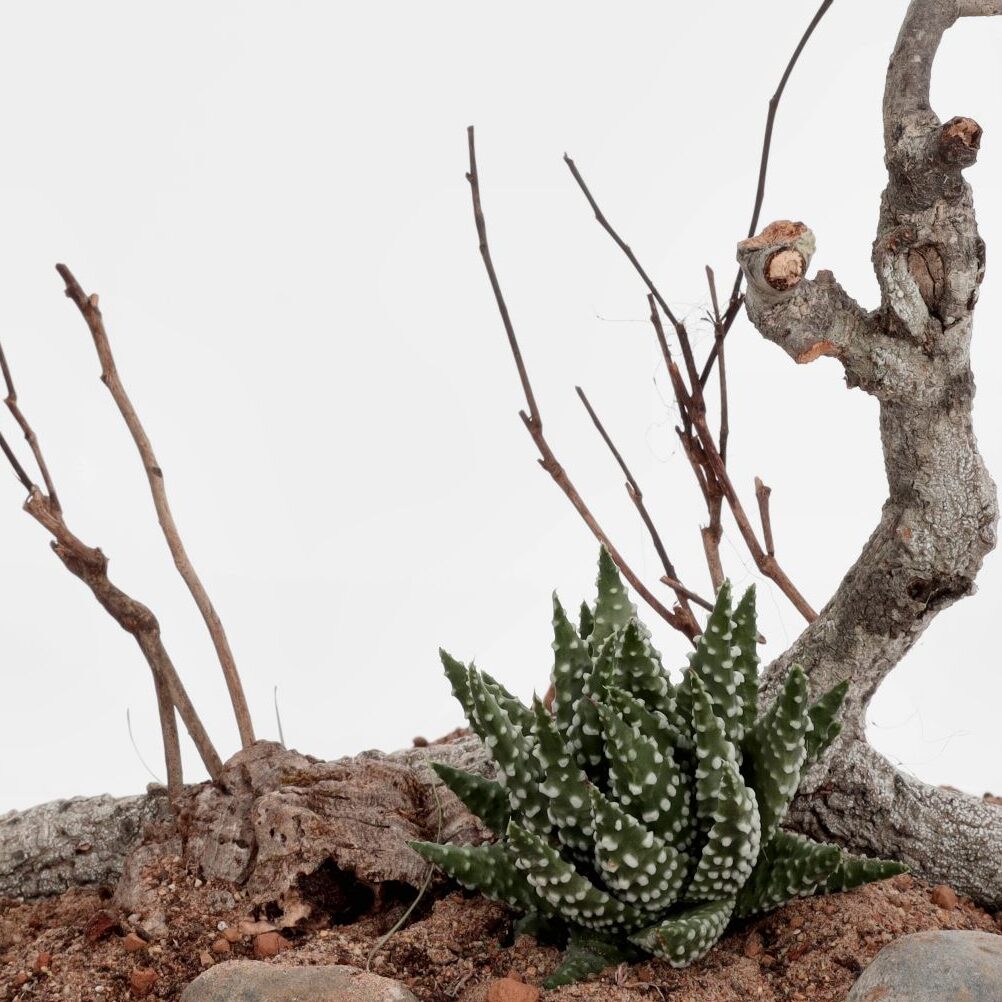
Living Stone (Lithops sp.)
Native to rocky areas of southern Africa these plants camouflage themselves amongst the rocks and pebbles to avoid being eaten, hence the name living stone. Available in a variety of colours, from browns, greens, oranges and sometime blue making them an aesthetically pleasing addition to the terrarium. Their slow and low growing nature makes them suitable for small and larger terrariums. They are extremely drought tolerant and do not like to be overwatered.
These plants could potentially be damaged buy larger animals but are ideal for smaller lizard species.
Haworthia
The Haworthia genus is native to southern Africa with most species found in South Africa and a few species extending into Namibia. These are very hardy plants and their ability to tolerate low light levels makes them very useful in an arid bioactive terrarium. They can be placed under rock crevices, branches and other plants and still thrive. Many species of Haworthia are commonly available, some of the most popular include H.fasciata, H.limefolia and H.margaritifera. Some species have hard spines on the tips of the leaves so care should be taken with larger species. These plants are still ideal for numerous species including small geckos, scorpions and beetles.
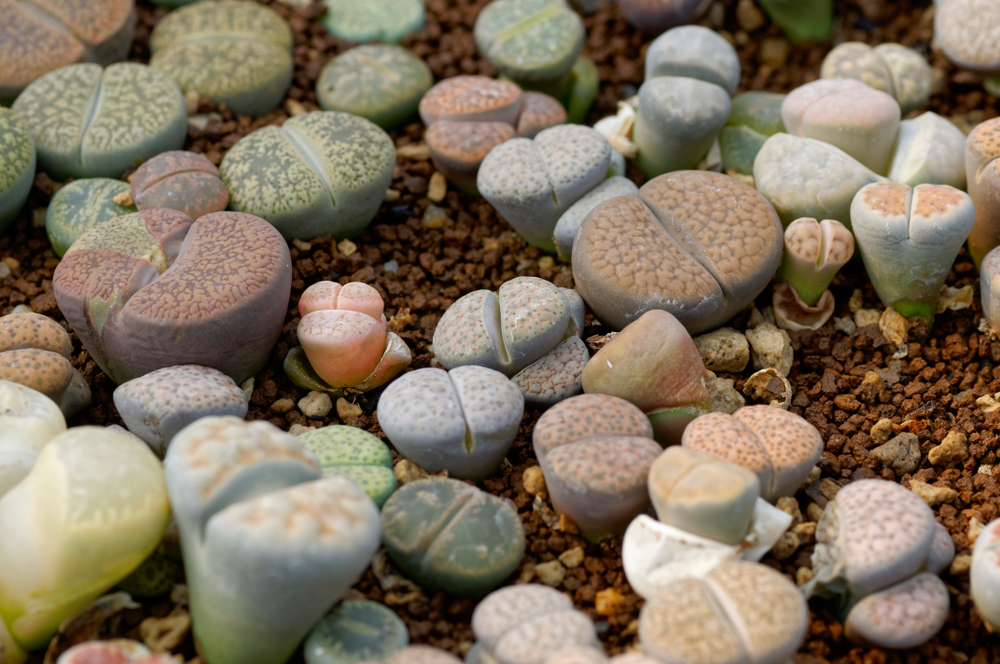
Prickly Pear (Opuntia sp.)
Commonly available as rooted plants with spines but readily available as spineless cut pads in the Reptile hobby. These pads are a great source of food for a variety of herbivorous and omnivorous species such as tortoises, bearded dragons, Uromastyx and iguanas. They can be offered as a whole pad or cut into smaller pieces and mixed with the animal’s usual diet to add variety. The pads take root very easily so can also be planted in the terrarium (cut end down).
Grasses
Grasses including Sedge (Carex sp) and Dwarf Blue (Festuca glauca) are a great addition to most arid bioactive terrariums. They do require more water than succulents but can still be used in some arid bioactive setups. They can be planted in a damp area of the enclosure, creating a separate microclimate. With leaf litter, moss and hides added they create a cool damp refuge for young Tortoises and many gecko species, while the rest of the enclosures can remain hot and drier. Their roots also hold together the substrate making them great for burrowing species, especially scorpions, tarantulas and beetles.
